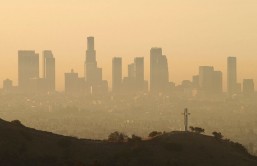The threat of ocean garbage has become as dangerous as climate change, expert Mike Moore said to Australian media.
Large concentrations of trash in the ocean, also known as "plastic soups," "are currently killing more animals than climate change", Moore, one of the experts in the field, said.
The large amount of trash in the Pacific Ocean was first documented by Moore in 1980, Indo-Asian News Service.
The scientist of California-based Algalita Marine Research Institute told the local channel ABC that "35 percent of fish caught have on average one or two plastic pieces in their stomachs", according to EFE.
"We are facing a new phenomenon. In fact, it is a new habitat which does not have precedents in the planet's history," Moore added.
Along with a group of scientists, Moore will travel to the Great Pacific Garbage Patch, also known as Pacific trash vortex, in July this year, IANS reported.
Composed mainly of plastic and sludge, the massive amount of garbage currently measure around 700,000 sq. km. Extending from the coast of California, the garbage proceeds to surround Hawaii and manages to reach up to Japan.
The Tsunami of 2011 also brought a lot of debris to this particular vortex, studies conducted using computer simulators suggested.
"Last year, scientist Erik Van Sebelle, who led the study for the Australian Research Council (ARC), alerted that the 'plastic soup' will keep on increasing for the next 500 years despite all the efforts to eliminate it," according to UANS.
"This huge surface of trash comprises of large quantities of palstic and other residues which remain trapped due to the currents of the five major ocean gyres and eddies."
Many species of fish tend to sometime confuse the plastic particles with planktons since they appear to be very small and manage to occupy extensive areas.








